
Autumn is the time of year in which hobby gardeners still have a lot to do, but in which gardening work is also less. A lot still needs to be harvested and winterized.
To the point
- protect sensitive plants
- Put tools away
- carry out final sowings
- Planting woody plants
- Carry out pruning
Table of contents
- 17 gardening tasks in autumn
- Cut dead plants
- Freeze crops
- Remove fallen fruit
- Prepare free beds
- Feeding stations for animals
- Seal greenhouses
- Tie up grasses
- Lime painting on trees
- Recycle leaves
- Clean nest boxes
- Plant and sow
- Lawn care
- Pruning of trees
- Protect perennials
- cuttings
- Stow tools
- Protect winter vegetables
- frequently asked Questions
17 gardening tasks in autumn
The activities listed here give you an overview of the tasks you should complete in the autumn months.
Cut dead plants
As autumn comes to an end, the splendor of flowers also comes to an end. However, you should not cut back every plant after flowering. The advantage is that you have less work to do in the fall and you provide shelter for insects. The birds sometimes find seeds in the fruit heads, which form an important source of food. The plant remains also conjure up an exciting picture in the garden in autumn and winter when they are covered with hoarfrost or snow.
However, for some plants it is still advisable to prune them.
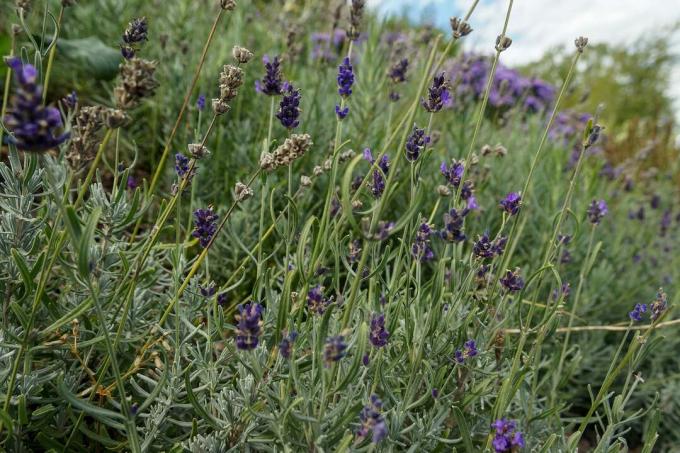
This includes:
- lavender
- Autumn asters
- Knapweeds
- Cranesbill
Freeze crops
In autumn there is something to harvest almost every day, which quickly results in mountains of fruit and vegetables. To prevent anything from spoiling, you can freeze part of the harvest and process it later. This works very well with fruit that you want to make into jams or juices.
Freezing is generally a preservation method that leaves many options open for further processing.
You should keep the following in mind when freezing:
- Always dry washed fruits and vegetables
- Thick freezer bags or frost-proof containers reduce the risk of freezer burn
- Always label content
Freezing is also ideal if the amount of fruit or vegetables is not yet sufficient to process. This way you can gradually save small amounts.
Remove fallen fruit
Basically, no rotten fruit should be left on the ground because it creates a breeding ground for pests. Fruit that falls early is particularly affected by pests. You should not leave this fruit lying around because then the pests will go straight back to the fruit tree. Remove the fallen fruit at the latest when it begins to rot compost it. As a result, many pests do not survive and fewer fruit will be attacked the next season.
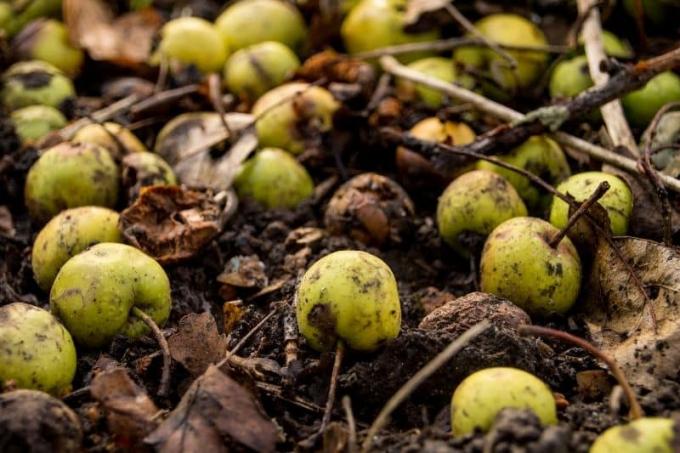
Prepare free beds
Do not plant Winter vegetables, don't leave your beds bare over the winter. This would promote soil erosion. Green manure can be sown in early autumn or you can cover the areas with mulch.
Feeding stations for animals
In September it is time to set up a feeder for those animals that do not hibernate or migrate to warmer regions. Mainly birds and squirrels benefit from it. To ensure that the feeding stations offer added value and do not become a source of food for pests such as rats, some preparations must be made.
- Clean bird feeders with hot water
- Sort out or repair broken or defective feed dispensers
- Install bird feeders at least 2 m high, safe from cats
- If necessary, protect the feeder from pests such as rats
Don't forget to remove any fallen food during feeding time. This will prevent rats or mice from finding the feeding stations and reduce the risk of disease transmission among birds.
Seal greenhouses
Do you have winter vegetables in the greenhouse or plants, such as ChrysanthemumsIf you overwinter in it, you should check whether your greenhouse is largely sealed. Check whether the elements fit flush or whether there are any damages or cracks. If necessary, also replace seals that have become porous.
Tie up grasses
Grasses are not cut in autumn. Open clumps offer plenty of attack surfaces for frost. Grasses are therefore tied together in autumn, creating a protection for themselves. Pruning only takes place in the spring before budding.

There are now creative techniques for braiding the grasses instead of just tying them together with a string.
Lime painting on trees
A coat of lime on trees prevents the bark from cracking in winter. It also makes it more difficult for pests to nest in it. The paint also provides limited protection against browsing by wild animals.
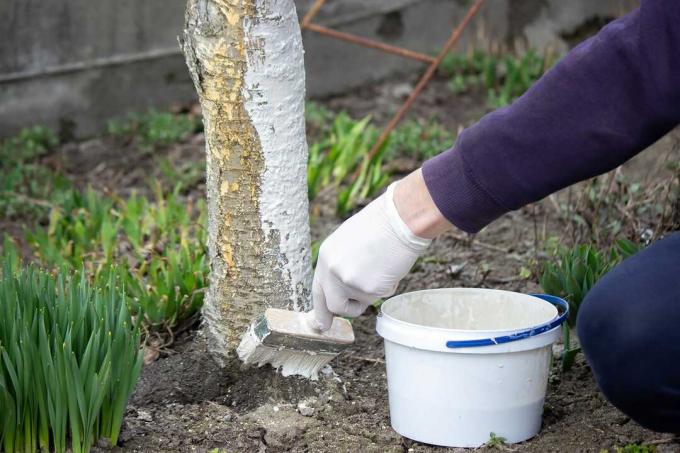
Make lime paint:
- 1.5kg lime
- approx. 1 liter of mixed wallpaper glue
- 10 liters of water
- mix everything
- Older trees with cracked bark beforehand may be brush off
- Apply a thin but opaque coat and evenly
Recycle leaves
If you have deciduous trees or deciduous shrubs in your garden, you often don't know what to do with all the leaves. However, the leaves are a very good mulch and can even be used as frost protection for sensitive plants. In addition, individual piles of leaves in the garden help many animals through the winter if they can hide in them.
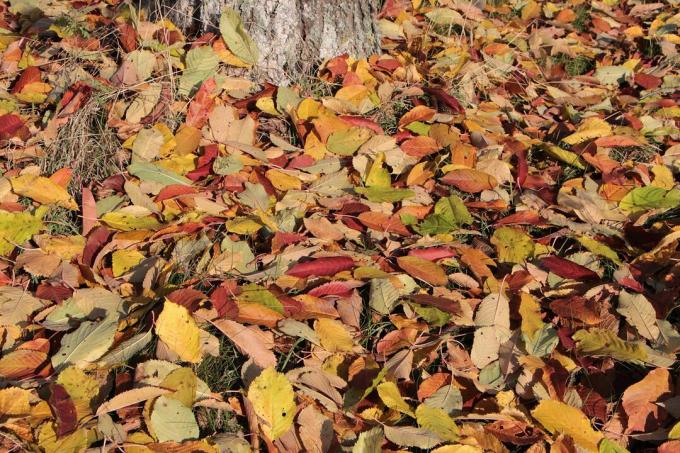
Make optimal use of leaves in the garden:
- Create your own leaf compost for hydrangeas and berry bushes
- Shred loudly with a lawn mower for faster decomposition
- Stagger leaf piles for animals with branches for better structure
Clean nest boxes
The nest boxes should be checked no later than mid-September, after the breeding season. The nesting boxes are cleared out, cleaned with water and reassembled. This prevents the transmission of parasites that could harm the next brood. In winter they occasionally serve as shelter for insects or bats. Therefore, a follow-up inspection is carried out again in early spring.
Plant and sow
The last opportunity is in autumn plant and to sow. Some of the harvest will take place this year, but much of it is already preparation for the coming season.
You can still sow this in the fall:
- Asian salads
- Winter salads
- arugula
- Winter postal
- winter peas
- Lamb's lettuce
- radish
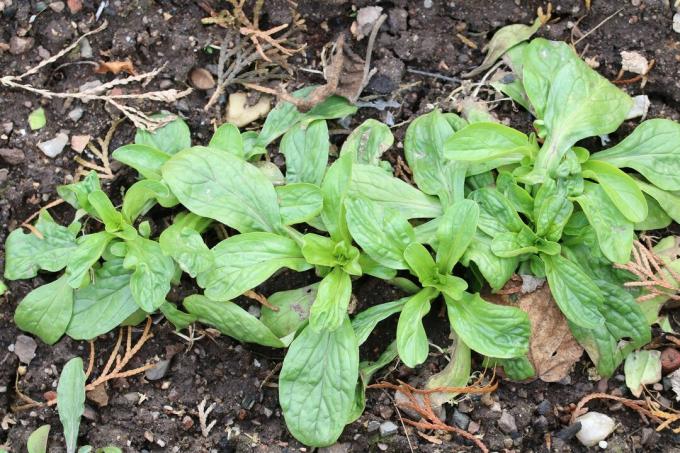
Here's what you can plant in fall:
- woody plants
- perennials
- Bulb flowers like Daffodils or Tulips
- Winter onion sets
- Winter cutting garlic
Lawn care
Before winter, you should give the lawn some attention. This means it gets through the cold season better and the effort required to reseed in spring, for example, is less.
Care measures in autumn:
- Remove moss
- Remove leaves
- Mow to a maximum height of 5 cm

Applying an autumn fertilizer is also helpful for the grass. Compared to spring fertilization, this contains hardly any nitrogen, but rather potassium. This strengthens the cell structure of the grass and frost damage is reduced.
Advantages:
- Green manure loosens the soil and provides nutrients
- Mulch provides nutrients and prevents early weed emergence
- promotes the formation of humus
- good opportunity to use the last lawn cuttings of the year as mulch
Everything that hasn't rotted by next spring goes into the compost starting in March and you can start the new growing season straight away. It is often no longer necessary to move the floor. It is enough to loosen it slightly with the rake.
Pruning of trees
In autumn it is legally permitted again to carry out more extensive pruning work. Most trees can still be cut and hedges too until late autumn. The purpose of pruning is to make the trees fit for the winter and, for example, reduce the risk of snow pressure.

You should keep the following in mind when pruning:
- Cut back at least two weeks before the expected frost
- Remove weak and diseased branches
- seal larger cut surfaces
Protect perennials
Not every plant is completely frost-resistant. Some crops like figs or lavender You should protect them in autumn so that they survive the cold period. This also applies to plants that can be at risk from snow pressure.
Loosely cover plants at risk of frost with branches and twigs. You can tie bushes together to protect them from snow pressure and also support them with stakes.
cuttings
Autumn is a good time to take cuttings. At this time of year, the cuttings have a greater chance of rooting because the soil has higher moisture. The cuttings are then placed directly in the ground and remain there until next spring. You can take cuttings in autumn from berry bushes and from woody herbs such as lavender or rosemary.
Tips for cuttings:
- Take annual shoots with a slightly woody base
- only use strong and beautifully grown shoots
- shorten larger leaves
- at least two eyes must be underground
Stow tools
You can slowly stow away many tools that were in constant use in the summer. Motorized devices in particular should be prepared accordingly.
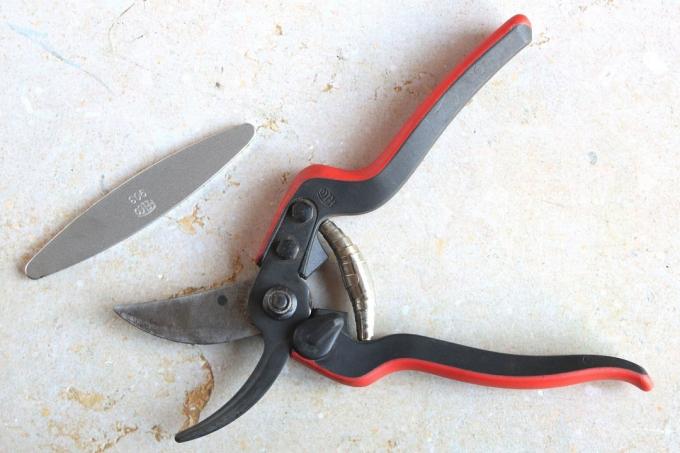
The following care measures are due for tools in the fall:
- Sharpen scissors and oil
- Drain oil and fuel from motorized equipment
- Sharpen tools and oil wooden handles
- Check devices for damage and repair or sort them out
Don’t forget to make outdoor water connections frost-proof. For example, you can wrap them thickly with old clothing and also cover them with a tarpaulin.
Protect winter vegetables
There are some vegetables that were planted in spring or summer that are not harvested until winter or early spring. Some varieties, such as Brussels sprouts, leeks or palm kale, survive the winter without protection. However, some vegetables are susceptible to rot in prolonged moisture and should be protected from direct rainfall. A small polytunnel or an improvised shelter is completely sufficient.
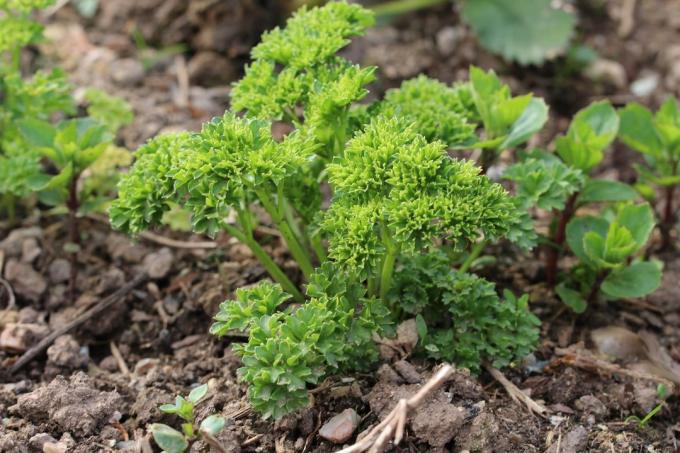
You should protect the following winter vegetables:
- Chard
- Parsley
- Chinese cabbage
- savoy
- Cabbage
frequently asked Questions
There is a persistent belief that the leaves of nut trees are not suitable for mulching or should not be added to the compost. The leaves from a walnut tree are not a problem in the garden. It can easily be composted in small quantities for mulching or mixed with other garden waste.
This can vary regionally. Winter protection can usually be removed in March when the plants start growing again. Protection would then even be a hindrance, as it also blocks the sun, which warms the soil and promotes sprouting. However, if there are late frosts again, you may have to cover some plants again.
Unfortunately, rabbits and deer like to nibble on bushes, tree shoots or winter vegetables in winter. The only thing that helps here is to protect the endangered crops with a fence. Young trees should also be provided with a trellis at a height of up to 1.5 meters.

